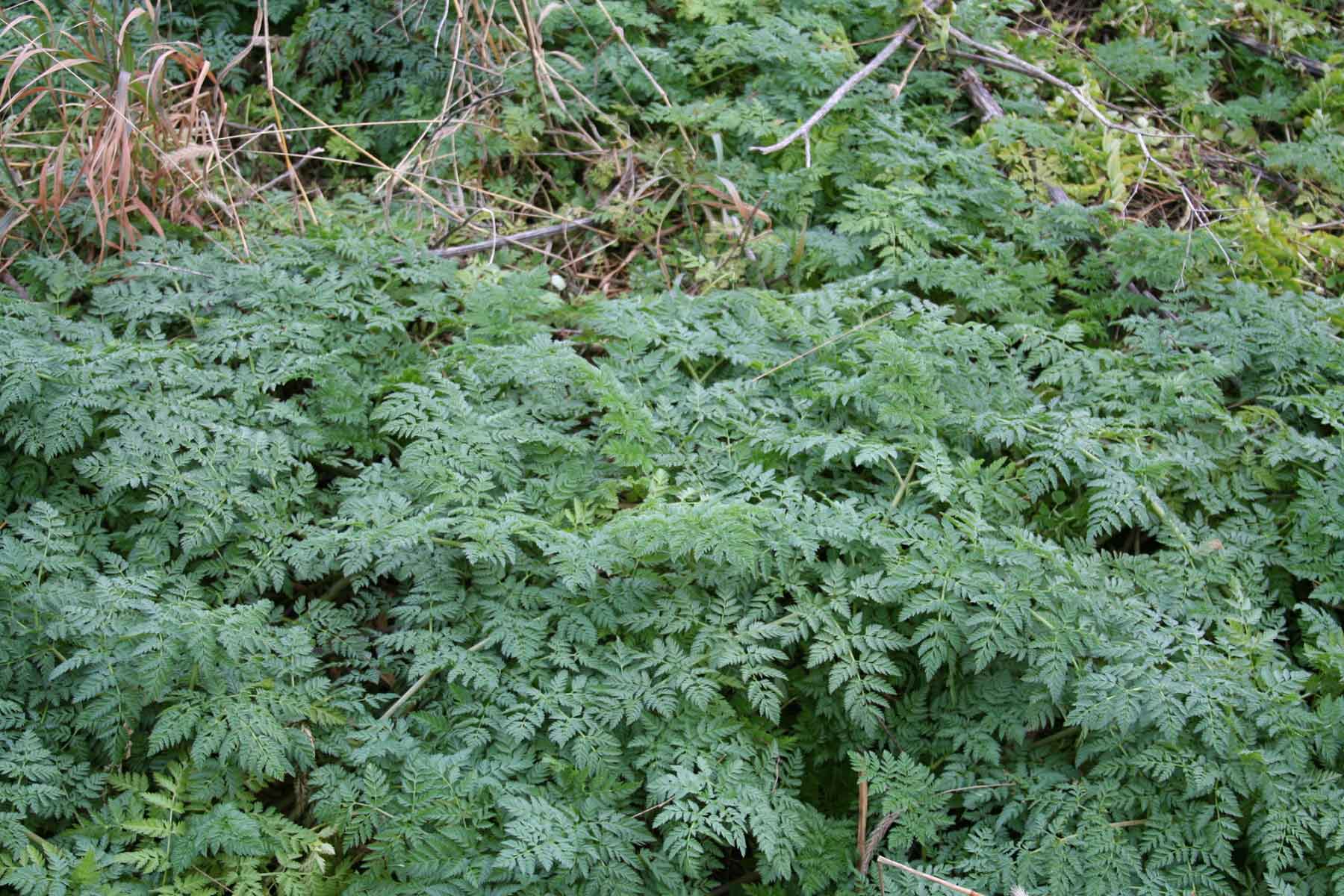Above: Poison hemlock in "rosette" stage. Photo: Purdue University
Governor Holcomb issued a proclamation designating Feb. 20-26 Invasive Species Awareness Week in Indiana. It is also National Invasive Species Awareness Week. Today I’m highlighting poison hemlock, an invasive weed.
Purdue experts Bill Johnson and Marcelo Zimmer wrote about poison hemlock in a Purdue Pest & Crop newsletter.
They wrote that poison hemlock can be noticed very early in the spring every year, as it is typically one of the first weeds to green up, usually in late February to early March if temperatures are favorable. They said the largest threat of this weed is the toxicity of its alkaloids if ingested by livestock or humans, but it can also reduce the aesthetic value of landscapes and has been reported to creep into no-till corn and soybean fields as well.
Purdue Extension’s fact sheet on poison hemlock states that it can also be found along roads, streams, trails, ditches, forest edges, and waste areas.
The Purdue experts said that poison hemlock is a biennial weed that exists as a low-growing herb in the first year, and bolts to three to eight feet tall in the second year, when it produces flowers and seed. It is often not noticed until the bolting and reproductive stages of the second year. Poison hemlock is often confused with wild carrot, but can be distinguished by its lack of hairs and purple blotches that occur on the stems.
The experts pointed out that poison hemlock contains five alkaloids that are toxic to humans and livestock, and it can be lethal if ingested. They warn that the plant’s alkaloids may also be absorbed through the skin, so if you find yourself hand-pulling poison hemlock, it would be a good idea to wear gloves. All parts of the plants contain the toxic alkaloids with levels being variable throughout the year. Symptoms of toxicity include nervousness, trembling, and loss of coordination followed by depression, coma, and/or death. Initial symptoms will occur within a few hours of ingestion.
For history buffs, the Greek philosopher Socrates was sentenced to death by hemlock poisoning.
Cases of poisoning due to poison hemlock ingestion are rare as the plants emit a mousy odor that makes it undesirable and unpalatable to livestock and humans. Consumption and toxicity in animals usually occur in poorly managed or overgrazed pastures where animals are forced to graze poison hemlock because desirable forage is lacking.
The Purdue experts said control of poison hemlock with herbicides is most effective when applied to plants in the first year of growth, or prior to bolting and flowering in the second year. The closer to the reproductive stages, the less effective the herbicide.
“In roadside ditches, pastures, and waste areas, herbicides containing triclopyr (Remedy Ultra, Garlon, many others) or triclopyr plus 2,4-D (Crossbow, Crossroad) are most effective in controlling poison hemlock,” they said. “Other herbicides that provide adequate control when applied at the proper timing are dicamba (Clarity, many others), metsulfuron-methyl (Escort XP), metsulfuron-methyl plus dicamba plus 2,4-D (Cimarron Max) and clopyralid plus 2,4-D (Curtail).” They caution users to pay attention to pre-plant intervals when these herbicides are used in the spring.
Find the above-referenced article at: https://extension.entm.purdue.edu/newsletters/pestandcrop/article/poison-hemlock-2/. Find Purdue Extension’s factsheet on poison hemlock at https://www.extension.purdue.edu/extmedia/FNR/FNR-437-W.pdf, which contains more detailed management considerations. Additionally, refer to Purdue University Weed Science’s “Guide to Toxic Plants in Forages,” available online at Purdue Extension’s The Education Store, at: www.edustore.purdue.edu.
Finally, I’ve focused on terrestrial plants in the last three weeks, but there are also invasive insects, aquatic plants, diseases and other species to be concerned about. Below are a few websites for more information:
- Report Invasive Species https://ag.purdue.edu/reportinvasive/
- Indiana Department of Natural Resources http://www.in.gov/dnr/3123.htm
- Indiana Native Plant Society https://indiananativeplants.org/
- Midwest Invasive Plant Network http://www.mipn.org/.

Poison hemlock in "rosette" stage. Photo: Purdue University